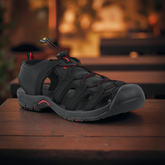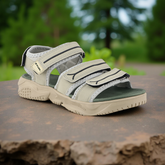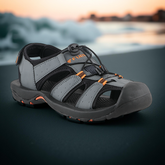Can stretching prevent foot pain?
Stretching is an essential component of a healthy lifestyle. It not only reduces the risk of injury but also helps with muscle soreness and pain. There are many misconceptions about stretching, so it's important to dispel some myths about doing it correctly. This post will focus on the importance of stretching for your feet in particular. Here are three things you may not know about foot stretches:
Things to know about foot stretches
- The number one reason people have problems with their feet is that they don't stretch them enough! We spend most of our time walking or standing on our feet, which can lead to tight calves that shorten and put pressure on the plantar fascia ligament to keep us upright - this leads to spasms, called plantar fasciitis. Wearing heels, even regularly, can cause the front muscles to become pulled and shortened, which causes conditions such as fallen arches. Foot stretches are essential for combatting this.
- When you stretch, you should always do them lightly. When doing foot stretches, it's important to focus on the muscles themselves and not just arching your back like some people tend to do when stretching their hamstrings or quads! If you feel pain while spreading your toes apart, then something is wrong - they're too tight to start with and therefore need to be stretched more gently than they currently can take.
- We have many nerve endings in our feet, which means that foot stretches cause far greater feelings of burning or tickles (depending on the exact action needed). It would help if you didn't attempt anything that causes horrible, numbing pains because it's not allowing your problem.
This stretch is to help improve the flexibility of your toes. It will also reduce pain in your feet and prevent problems such as clawed toes. To perform this stretch, try using a towel or something similar - Place it around the ball of your foot (just next to where you would normally wear your shoes) and slowly but firmly pull it towards you. If you want more resistance, grab a thicker item like a belt or rope. You can even try using someone else's hands for added force! This exercise is to increase the flexibility of your Achilles tendon. Sit on the floor and place your heel against your buttock, then try and straighten out your leg as much as possible. If you can't do this, tie something around the ball of your foot (like a belt) or grab someone's hand and pull it in towards you. It should feel like the stretch is just above the ankle rather than at the top of your calf.
Conclusion
When performing any toe exercise, be sure that you are standing on solid ground so that if at any point they feel uncomfortable, you can stop without harming them. Don't strain yourself to make the exercises harder than they should be, as this can lead to serious injury. Also, remember that if you're exercising after a period of being inactive, it will take some time for all muscle groups (including those on your feet) to loosen up again - don't expect immediate results!






